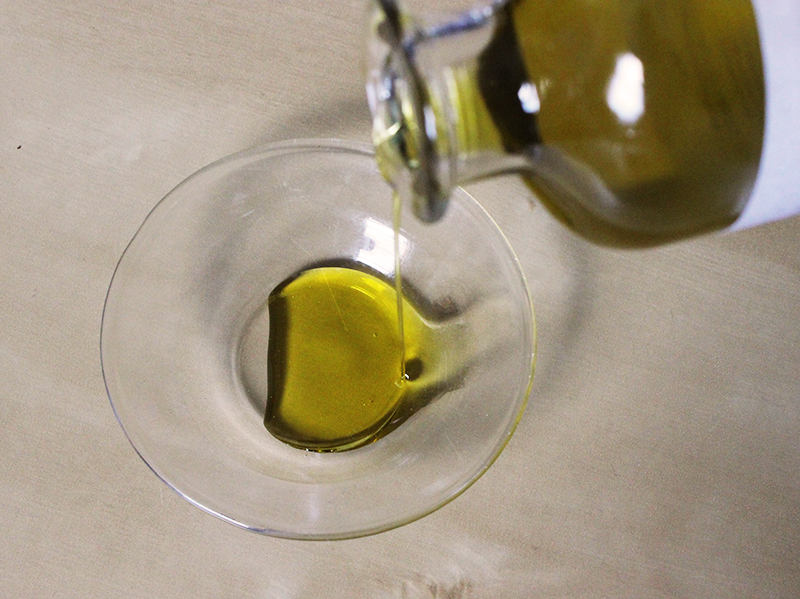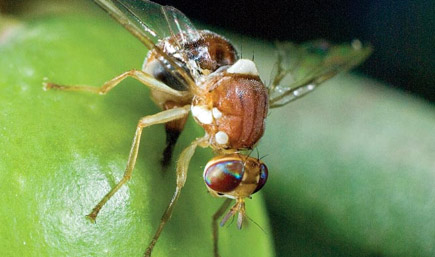 After record low olive oil production in Italy and France, something of a silver lining might come from Greece.
After record low olive oil production in Italy and France, something of a silver lining might come from Greece.
The winter of 2013-2014 was too mild. The spring and summer that followed, by contrast, were cool and wet. These seemingly innocuous conditions led 2014 to be one of the worst olive harvests on record in Italy and in parts of France.
Bactrocera oleae, commonly known as the “olive fruit fly,” annually torments olive farmers in all the major olive growing regions in the Eastern Hemisphere, as well as in California in the Western Hemisphere. Adults lay their eggs one at a time into the flesh of the olives growing on the trees throughout the spring, summer and fall, where the larvae then hatch and grow through several stages within the olives, eventually emerging as adult flies - and ruining the olives for eating or pressing into oil. Larvae that hatch in late fall, however, emerge from the olives earlier in their development and fall to the ground, where they enter into and remain in the pupa stage, hibernating for up to four months through the winter. Although farmers do resort to various forms of pest control to combat the olive fruit flies when necessary - and there are many effective organic practices - they generally rely on natural weather patterns to keep the fruit flies’ numbers in check.
Farmers can count on cold winter temperatures to wipe out many of the hibernating larvae, cutting down the number of adults who will start off the season. They can count on hot, dry summers to similarly reduce the population - temperatures over 30 degrees Centigrade make females less fertile and temperatures over 32 degrees kill off eggs and larvae. Farmers can count on nature to manage the fruit flies. Except when they can’t.
 Olive Fruit Fly (Bactrocera olea)
Olive Fruit Fly (Bactrocera olea)
In Italy and parts of France, following a warm winter, the 2014 olive growing season brought perfect - cool, humid - conditions for the olive fruit fly to flourish - and it did, to the utter ruin of the olive crop for many olive oil producers, especially the smaller, grower-producers. To further augment the crisis, already susceptible olive trees in Italy were hit late in the growing season by the fungal diseases “olive leprosy” (Gloeosporium olivarum) and “peacock spot” (Spilocaea oleaginea). Additionally, olive trees in Southern Italy, in particular, Puglia, were attacked by the bacterial disease Xylella fastidiosa. Not only did this bacterium affect the olive oil production for 2014, but the threat it poses to other types of crops throughout Europe is so high that the European Union just last month approved emergency measures including the complete destruction of all infected plants in Puglia and restrictions on importation for plants and products from Puglia and other affected areas to other parts of Europe. At the end of this catastrophic season, some producers saw an 80% reduction in olive oil production; some determined that none of their olives could be pressed into oil that would meet their quality standards.
This crisis really came to our attention when we began reaching out to the small producers we work with at the end of last year, to request our allotments for 2015 and received back apologetic, heart-felt letters explaining that they could not fill our orders, because they had no olives to press and therefore, no olive oil to sell. Some larger, more industrial producers have opted to import olives from North Africa, press them and sell that oil. To the grower-producers with whom we work, however, this was inconceivable. They pressed and will sell as much olive oil they were able to salvage - at the high standards of flavor and overall quality they demand - and hope for better climatic conditions and to be better prepared to combat Bactrocera oleae, as well as the other fungal and bacterial diseases, for the 2015 growing season.
To make matters even worse, Spain struggled with a terrible drought throughout the summer of 2014, which seriously reduced the olive oil production there as well. Faced with seeing empty spaces on our olive oil shelves in the coming months, Valerie and Ihsan looked to a European neighbor for a solution. They accepted an invitation from the government of Greece to attend a trade show highlighting a variety of Greek products, including olive oil. We knew the Greek olive farmers had enjoyed a more productive growing season and harvest and we already had great success with the olive oils from the Karelas family in Messinia (My Olive Tree), so Ihsan and Valerie were optimistic about more possibilities. As they had done years before with Italy, France and Spain, they went to seek out a handful of small producers who share their philosophy of craftsmanship, sustainability, sound practices and uncompromising quality, to partner with them to offer their olive oils to our customers.
What this all means, is that, instead of empty spaces, you will be seeing some new faces on our olive oil shelves and will have the chance to savor some new aromas and flavors. The Greeks should be arriving in June, so please ask for a taste when you stop by! We certainly will welcome back our old Italian and French favorites as everyone gets back on track with the harvest of 2015; ultimately, our shelves will be filled with a broader selection of olive oils - richer for its diversity.
Marianne Staniunas is a cheesemonger and a member of the Wine Department at Formaggio Kitchen South End, Boston.

